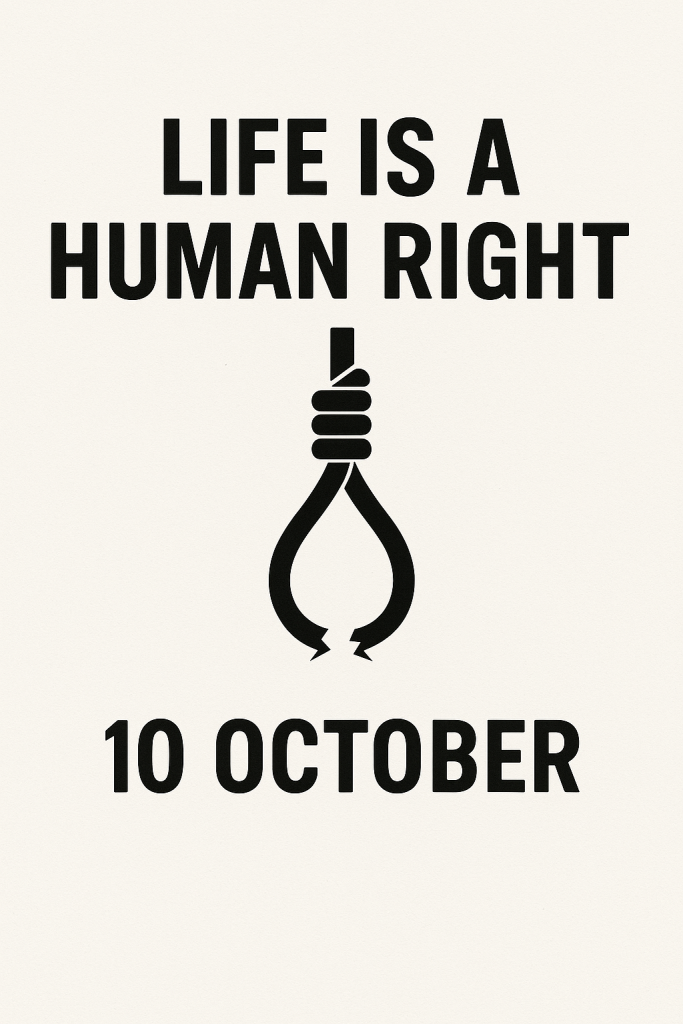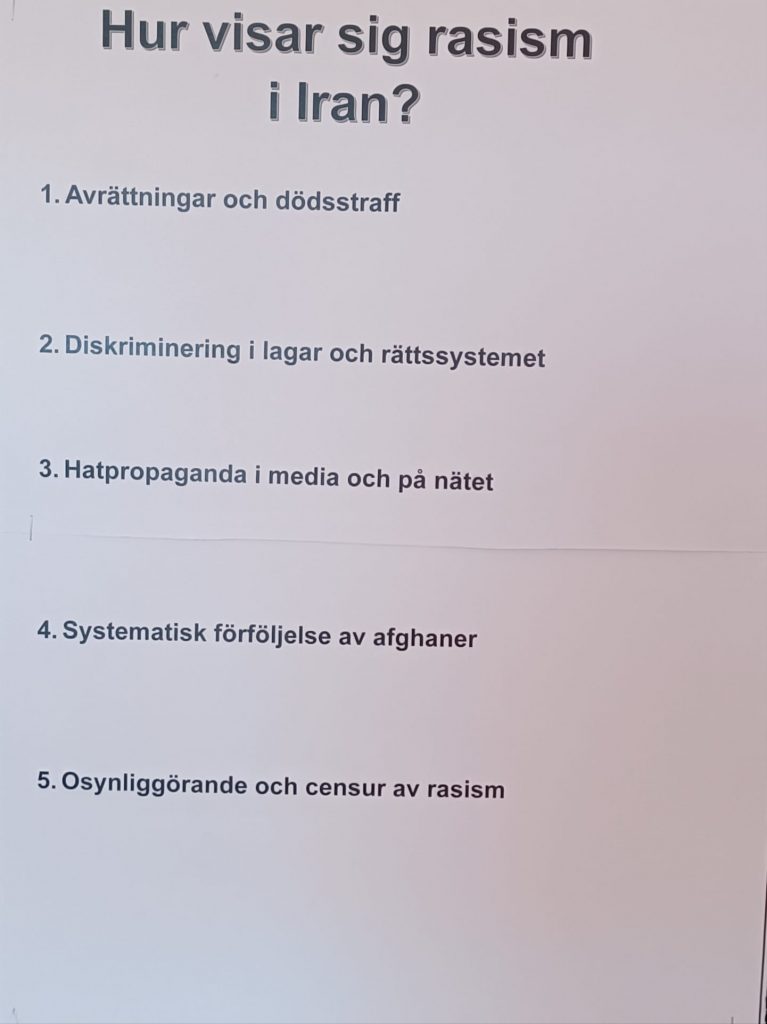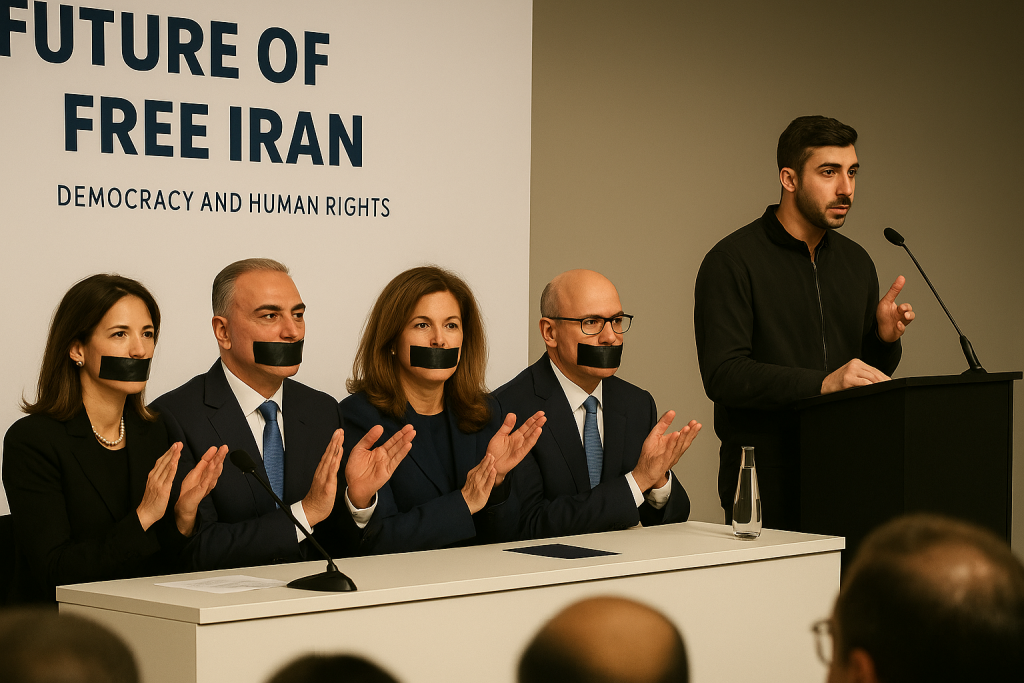In Shahrivar 1403 (August 22, 2024 -September 21, 2024), Iran witnessed executions in 18 out of the country’s 31 provinces. The number of executions decreased by 50.5% compared to the previous month, during which 101 executions were recorded in Mordad (July-August). On average, one to two people were executed each day this month. Additionally, one public execution took place in Shahroud, Semnan Province. Reports indicate that since 1402, eight public executions have been carried out. Despite international condemnation and human rights efforts to halt such practices, the Islamic Republic continues to insist on issuing public execution sentences.
It appears that public executions, despite their profound psychological impact on society, are used as a tool by the Islamic Republic to humiliate victims, exert pressure, and showcase its power.
This report has been prepared not only to inform the international and domestic communities but also to foster global solidarity in support of activists and human rights organizations working to increase pressure on the Iranian government to respect the most fundamental human right — the right to life. Alongside this goal, the report seeks to amplify the voices of the victims and their families, encouraging citizens to reflect these voices and play an active role in building a society free of violence and executions. This path leads towards a more just and humane society, where human life and dignity are valued above all tools of oppression.
Content of the Report
In Shahrivar 1403, the number of executions reached 50, involving victims of various identities and crimes. It is important to note that, apart from a few cases confirmed by domestic media or judicial officials, the majority of these executions were identified and reported by human rights organizations and activists. Despite the ongoing informational limitations and the political and social pressures consistently imposed on human rights activists, more comprehensive information regarding the identities and the conditions of the victims’ families has been obtained this month compared to previous months.
This more accurate data allows for higher precision in reporting and provides a clearer picture of the victims’ circumstances, representing a significant improvement in documenting these crimes. It should be noted that if new information becomes available, this report will be updated to provide a more precise understanding of the state of executions in Iran.
Geographical and Demographic Distribution
In Shahrivar 1403, executions took place in 18 provinces across Iran, with a total of 21 prisons involved. East Azerbaijan province registered the highest number of executions, with 10 executions in the prisons of Tabriz and Miandoab, accounting for 20% of the total executions. Following this, Fars and Isfahan provinces each recorded 7 executions in Adelabad and Dastgerd prisons, respectively, representing 14% of the total executions each. Sistan and Baluchestan province ranked third, with 5 executions in Zahedan prison, making up 10% of the total.
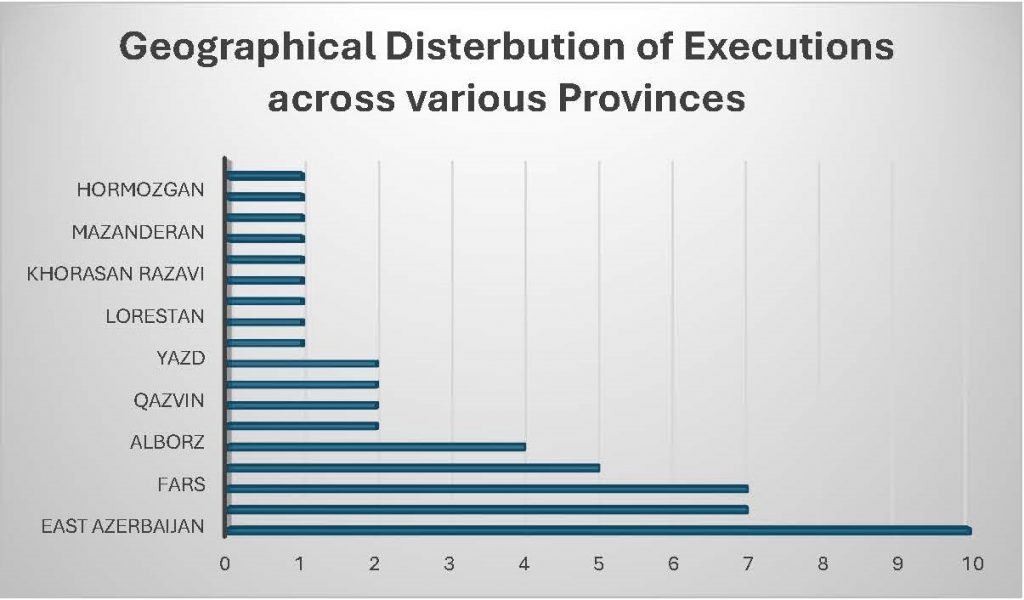
The geographical distribution of executions reveals that the number of executions per day varied from 1 to 7 across different prisons. The data indicates that executions were mostly concentrated in one or two main prisons in each province. For example, the highest number of executions occurred in Tabriz prison (8 people), Adelabad and Dastgerd prisons (14 people combined), and Zahedan prison (5 people).
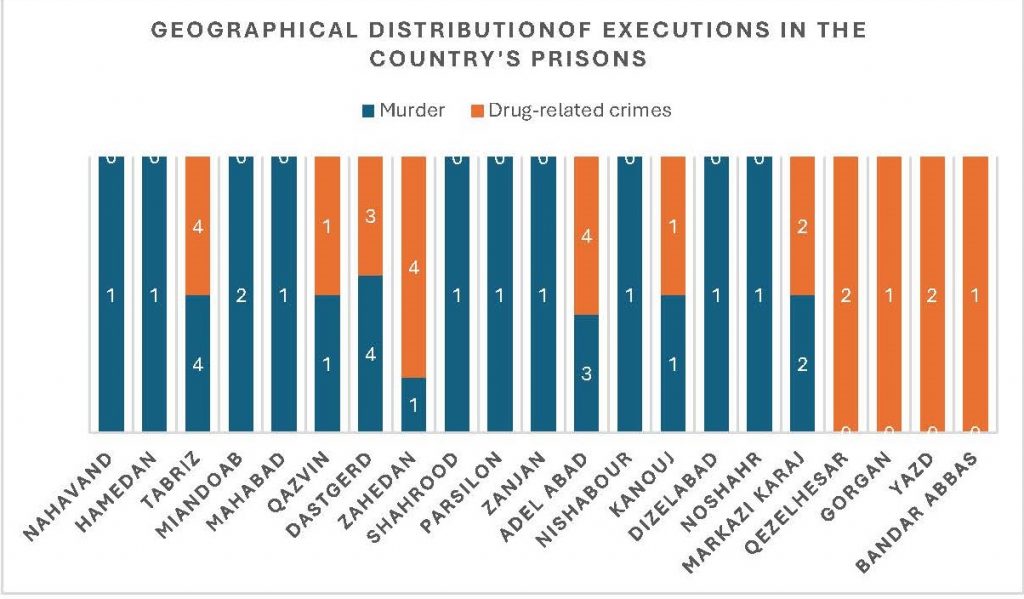
Analysis of the Identities of the Executed Individuals in Shahrivar 1403
An examination of the identities of those executed in Shahrivar 1403 reveals that all of the victims were men, with an age range between 21 and 60 years old. The majority of the executed individuals fell within the 30 to 39-year-old age group. Among the executed, 7 individuals held non-Iranian citizenship: 1 from Iraq and 6 from Afghanistan. Of these individuals, 4 were executed for drug-related crimes, while 3 were executed for murder charges. Additionally, 2 individuals were sentenced to death for committing both crimes (drug-related offenses and murder).
In terms of the marital status of the victims, more detailed information is available compared to previous months. The marital status and number of children for 30% of the victims has been reported.
Reasons for Executions
Data shows that the executions in Shahrivar 1403 were carried out due to crimes related to drug offenses, murder, and cases involving both drug offenses and murder.
- Drug-Related Crimes: According to available information, 24 individuals were executed for drug-related crimes, and 2 others were executed for committing both drug offenses and murder. This means that a total of 52% of the executions in Shahrivar were related to drug crimes. In comparison to Mordad (July-August), when 58.8% of the executions were drug-related, there has been a 6.8% decrease in the proportion of executions for drug offenses in Shahrivar.
- Murder: The number of individuals executed for murder in Shahrivar was 24, in addition to the 2 individuals who were executed for both murder and drug-related crimes. In total, 52% of the executions in Shahrivar were linked to murder. This marks a 16.4% increase compared to Mordad, where 35.6% of the executions were related to murder.
Issuance and Confirmation of Death Sentences
In Shahrivar 1403, a total of 18 death sentences were either issued or confirmed. Among them, the death sentence of Hatam Ozdemir was confirmed on the charge of “Baghi” (armed rebellion). Additionally, the death sentences of Behrouz Ehsani and Mehdi Hassani, political prisoners, were issued on charges of “Baghi,” “Moharebeh” (waging war against God), “corruption on earth,” and membership in the Mojahedin-e Khalq Organization (MEK).
The charge of “Baghi,” which has been increasingly used against political and civil prisoners by the Islamic Republic’s judiciary in recent years, has put many of these prisoners at risk of execution.
Executions and the Families of Victims: A Clear Violation of Human Rights
Although detailed information on the marital status and number of children of only a portion of the victims has been released, considering their age, it can be assumed that many of them had families and children. Reports indicate that in Shahrivar 1403, over 32 children lost one of their primary caretakers due to the executions.
Many of these families, due to reasons such as poverty, long distances, or lack of information about the timing of the execution, were unable to have a final meeting with their loved ones. This inability to say goodbye is considered a form of psychological violence against families and has a profound impact on their mental well-being.
The children of the victims, now left without a guardian, face an uncertain future filled with serious challenges. In addition to losing their parents, these children must cope with social stigma and various deprivations, which could lead to a cycle of poverty and inequality.
Families of Those Sentenced to Death: Psychological and Social Pressures
On the other hand, families of those who have received death sentences face intense psychological and social challenges. These families often live in constant fear and anxiety, with uncertainty about the timing of the execution being one of the primary causes of their stress.
Many of these families, especially if the convicted individual was the breadwinner, face severe economic challenges. Losing a source of income and financial support exposes these families to further poverty and inequality. Moreover, society often judges and ostracizes these families due to the crimes committed by their loved ones.
In many cases, these families struggle with the complexities of the judicial system and lack access to experienced lawyers. The lack of transparency in the judicial process and the inability to mount an effective defense leave these families feeling defenseless and abandoned.
Conclusion
Executions in Iran remain one of the main tools of repression and power exertion by the Islamic Republic. In addition to the blatant violation of human rights, these executions have deep consequences for the families of the victims. In Shahrivar 1403, numerous executions were carried out for crimes related to drug offenses and murder, with more than 50% of the executions linked to these two categories.
The families of the victims not only lose their loved ones but also face numerous challenges, including poverty, social stigma, and lack of psychological and economic support. The inability to have a final meeting with the victims represents a form of psychological violence against the families, leaving lasting negative effects on their mental health.
Children of the victims, deprived of their caretakers’ support, face an uncertain future filled with significant social and economic challenges. These children are at risk of falling into a cycle of poverty and inequality, which could perpetuate social problems in the community.
